About the Course
The summer seminar is a distinctive feature of the international master's degree programs of the School of Design, Shanghai Jiao Tong University. It aims to enlarge students' global horizons, cross-cultural and cross-disciplinary research competence. This summer, the MLA program invited the former president of IFLA, Professor James Hayter to give lectures on "Resilient Climate Change Resilience in Practice: Landscape Architects at the Forefront". By building design strategies based on SDGs(Sustainable Development Goals), the course guide students to design solutions to everyday public space problems, especially those related to human-vehicle coexistence and climate adaptation. The course focuses on nature-based solutions, and prepares students to look at the landscape from a functional and aesthetic perspective.
Brief Description of the Course
The United Nations has put forward 17 SDGs goals to achieve a more sustainable future for all. In the face of economic problems caused by climate change, increasing social costs and the spread of COVID, it is necessary to extensively rethink the use and value of open space and make public space an important part of sustainable urban development. As landscape architects, we need to focus on public space in a new way and use design to explore the complex functions of different spaces. For example, what can a simple, paved space like a parking lot do beyond parking; how can infrastructure elements like streets and parks be accommodated for climate adaptation; and whether our streets can be more than just circulation routes for vehicles, pedestrians and public facilities, but can also take care of residents' activity needs.
In this summer short course, students and faculty will explore how urban issues can be addressed through landscape design from a nature-based perspective of resilience to climate change, translating ideas into solutions and shaping a new way of looking at the landscape.
In everyday design work, it is increasingly important to use sustainable techniques and methodologies to respond to changing scenarios. The course aims to cultivate a nature-based vision of solutions, improve students' interpretation of public space, and lay the foundation for designing a public space landscape that can sustainably benefit many people and expand their horizons so that a balanced ecosystem, functional and safe place planning is possible. Remember we design for both aesthetics and function!

THE 17 SDGs GOALS(Source: UNDP)
About James Hayter

James Hayter
Landscape Architect, Urban Designer, Architect, Professor, University of Adelaide, and former President of IFLA
James Hayter is regarded as one of Australia’s most respected design professionals in the fields of landscape architecture, architecture, and urban design. As a graduate of the University of Adelaide, the University of Sheffield and Harvard University, he possesses comprehensive strategies, forward-thinking concepts, and hard technical skills.
James Hayter is the founding director of Oxigen studio, a specialized landscape architecture design studio located in Adelaide, South Australia. Some of the most notable projects include Canberra's Central Park Precinct, Tonsley Innovation Precinct and Lot Fourteen - Adelaide's emerging 'global precinct' - focusing on innovation, entrepreneurship, research, education, culture and tourism.
James Hayter focus on improving the health and productivity of our cities is echoed in his practical approach and reflects the global movement for new landscape architecture that will positively change the way our cities are planned and inhabited.
James Hayter firmly believes that we can make the impacts on urbanization through good design. He strongly advocates that landscape architects work together to manage our natural environment for future generations and to connect people to nature in our cities. According to him, "Landscape architects are committed to working with nature to provide healthy outdoor spaces, manage urban stormwater, improve polluted sites, and connect communities. Our role is to coordinate safety and create inclusive places that are also a joyful place to be."
Coordinator of the Course: Zhu Liqing

AssistantTravis Wright & Chen


Key Points of Design
The course focuses on the following six types of public infrastructure issues. 20 students freely choose the land they are interested in for design. The final results can be divided into four types: campus type, parking lot type, community type and other types.
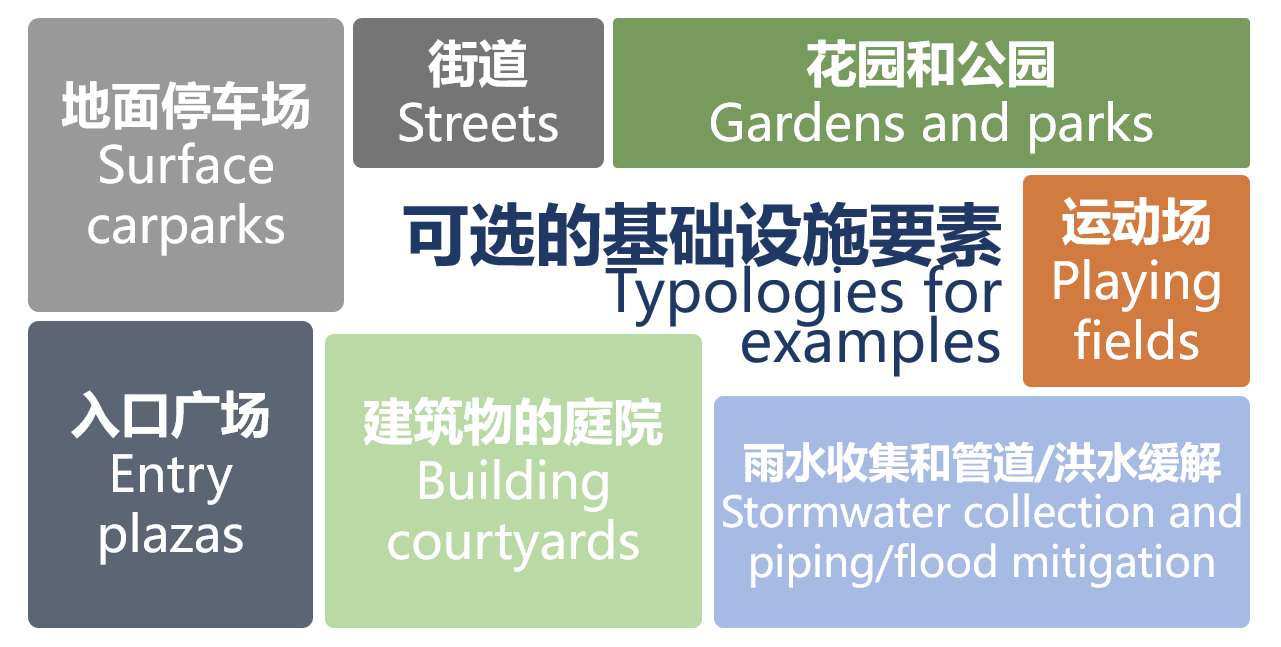
Six Typologies
Students are advised to use the following six ways to update the original space. These six methods are based on the condition that the original space function is not destroyed, and are designed to guide students to learn to integrate functionality and aesthetics into landscape renewal, benefiting a variety of users.

Six Ways to focus on space
Seminar Outputs
Campus Typology
Campus open space transformation: Ding Xuehan
Based on SDG3, 11&13, the design transforms the green space between dormitory buildings on campus into an ecological pocket park.


Campus street transformation: Zhang Le
Based on SDG3&11, this design activates campus boundaries.

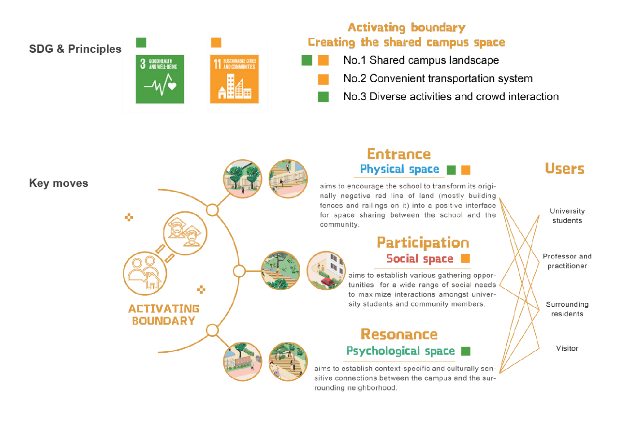
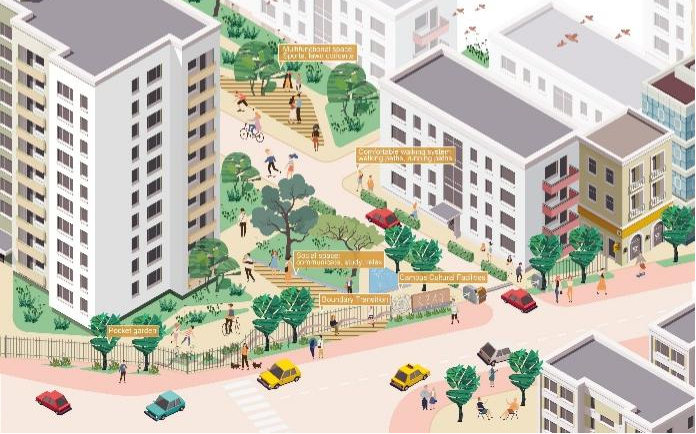
Campus Square Reconstruction: Yin Chao
This design chose the square in front of the third dining building on the Minhang campus of Shanghai Jiao Tong University as the design site. Based on SDG3&6&11&13, the plaza is transformed into a dynamic space with the complex functions of parking, dispersal, recreation and viewing. The design of the rain garden system is tailored so that walkers,parkers, residents and the ecosystem can all have their own place.



Parking lot typology
Parking lot reconstruction: Wu Jiayuan
Based on SDG3, 11&13, the design takes advantage of the original height difference of the site to create an oasis above the parking lot for the nearby community to gather and enjoy nature.



Parking lot transformation: Jiang Meiyi
This design transforms corner parking lot into a community public space based on SDG3&11.

Community typology
Reconnect:Chen Yunru
Reconnect, the project is my community public space, in Xuzhou, Jiangsu Province. This design is entitled Reconnect because I wish the site could reconnect people with people, people with nature in the urban community. To realize the goal of sustainable cities and communities, the principle of my design is to make a more vibrant and more ecological community.



Sun Ce: Dwelling outside the courtyard
The current residents are mainly elderly people and their daily activities are limited to the courtyard. The design is based on the perception of the relationship between the open space and the courtyard, taking the activity experience of the elderly into account.



Others
Waterfront space improvement: Dou Kexin
Based on SDG3&11, The design transforms the river bank into a public space with cultural features and waterfront activities.


All Achievements
Chen Kai: campus space promotion design
Ma Rui: Cleaner water in south lakeshore
Song Wen: Community space promotion design
Zhang Guanhao: Embrace Nature



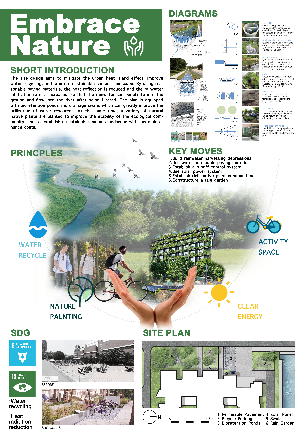
Chen Yunru: Reconnect
Zhang Le: Activation Campus Boundary
Anusha: Experience greenery while walking through history
Sun Ce: Dwelling outside the courtyard




Pei Shichun:Green Tanning
Wu Jiayuan: The Oasis
Zhang Chenyuan: Parking lot revolution
Zhang Ke: “On wind, unwind” healing garden



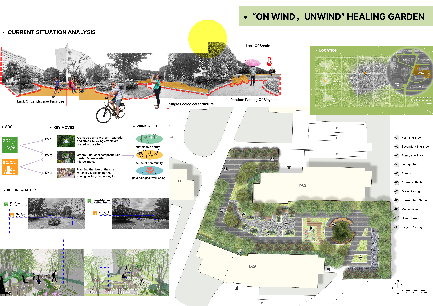
Ding Jiahui: Cold Play
Jiang Meiyi: Vital Square
Ying Chao: P&G&S reassembly
Zhu Yangxiangru: let’s start a conversation
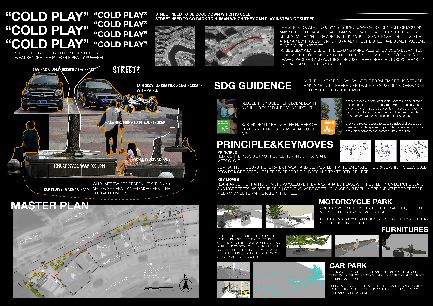



Dou Kexin: 3R
Ding Xuehan: Nature Awakening
Fen Yueyang: Finding the “Wei River” in the Dream
Wang Xiaoyu: For Human, For Animals, For nature





Course Shining Moment

Discussion Moment

Group Photo
Students’ Feedback
This course is really exciting, I can get new feelings and skills and thoughts in each lecture. I always thought that landscape architects can do the same thing like architects and even product designers who can do something that unique. For most of my reflecting time, I was thinking about what things that are unique for landscape architecture, why we have to focus on everything? But the truth is there are not too many projects that stand out without the knowledge of other disciplines. But today, when James told us that only landscape architect work in partnerships, I kind of realized that my complain about my profession is totally wrong, it is how it exists, and I need more time, more practice and more contemplation. It really helped me to understand further, and think deeper——Ding Jiahui
The course design starts from a small site, which can be done in more detail, also magnifies some shortcomings in my design thinking and basic skills. On the whole, it is still very inspiring~ This seminar emphasizes the importance of presentation. Whether it is English or Chinese, the practice of expression is a very long-term task and needs to be paid attention to.Also, the teachers are very kind! Before the course started, I was a little worried about not being able to keep up, but later I found that the teachers were really attentive and gave a lot of encouragement in the process of commenting on the work we did...——Ding Xuehan
First of all, what impressed me most about this course was the learning about SDG, which gave me more insight into the cognition for this whole SDG system. I felt that the design review classes were very short but the teachers' views would give me insights, and Professor James and Professor Travis' suggestions I found very constructive and inspiring. Whether it was James' advice on details in the third class or Travis' advice on interaction at the water's edge in the last class, I felt that it would open up my mind a bit. I'm grateful to both teachers above, and also to Mr. Zhu and Mr. Chen for some supporting work.——Ma Rui
Professor James explained to us the active response of landscape architects under the background of the global climate crisis and many social problems, and focused on the SDG strategy. This made me learnt that many considerations need to be taken in order to deal with such problems in landscape practice, and learned that our positive behavior may improve these global problems.——Sun Ce
Through this course, I had a deeper impression on SDG and deepened my sense of responsibility as a landscape architect.
Thank you very much for your encouragement and advice in each class. I have learned a lot from it. At the same time, I realized that I really needed to improve my English to make sure that I could clearly convey my ideas in future reports.——Zhu Yang Xiangru
I felt the course was really interesting showing and giving a perspective to view the site from the Sustainable Development Goals. It was amazing to apply a simple idea that we encounter daily in a design with a motive to achieve sustainable development. Thank you all for providing the opportunity to attend the course and hope that there are more such classes in the future as well.
——Anusha